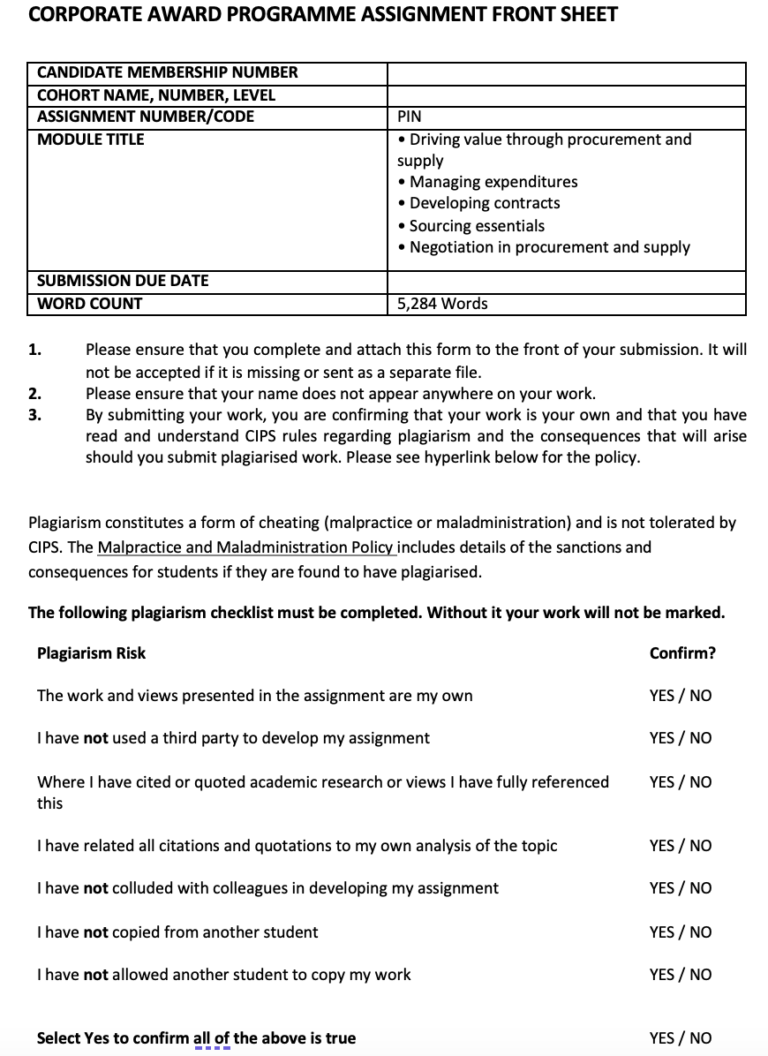(Solution) 5OS06 (AC3.1) Identify two stakeholders and explain their involvement in leadership and management development initiatives in your organisation

New User Gifts
First Order Deal get Ksh 200 Off.
£ 30.00 Original price was: £ 30.00.£ 10.00Current price is: £ 10.00.
Payment Methods:
Description
Solution
Senior Leadership
Senior leadership, including executives and top management, is the central stakeholder for the leadership and management development initiatives at Saudi Aramco. Starting with the strategic vision of these programs, they start by validating that their strategic vision is in line with the organisation’s long term business objectives as well as understanding the major industry trends. Senior leaders provide organisational support by securing the resources they need such as time, funding, and key personnel access. They also shape the design of leadership programs about what skills and behaviours are needed to drive organisational success in a complex, global energy market (CIPD, 2024c). Furthermore, senior leaders also actively play the role of a mentor or coach, who shares their experiences or insights with the future leaders. Through this involvement, the future leaders in the company gain real world knowledge of the company’s culture and values. This is critical to their contribution to the formation of a culture of continuous leadership development that will empower a resilient and adaptable leadership pipeline with the ability to navigate future challenges.
HR Professionals
The Coordination and management of leadership and management development initiatives is primarily the responsibility of the HR department, specifically the people development team. It is the role of HR professionals to run training needs analysis, such as to identify gaps in leadership competencies so that programs are adjusted to cater to these specific needs (CIPD, 2017). They also create and provide leadership programs, including e-learning platforms, classroom-based training and on the job learning. In addition, HR professionals work closely with senior leadership with the aim of aligning leadership programs with organisational objectives and to lead the evaluation of program, to make sure that the initiatives achieve the expected outcomes. They also get involved in succession planning, to ensure that there is a pipeline of capable leaders ready to step into those key positions upon the shortage of employees in a certain role.
Please click the following icon to access this assessment in full
Related Papers
(Solution) Oakwood International 5CO02 Section One –Report
(Solution) CIPS FIDIC Contracts Advanced Practitioner Corporate Award (APCE)
- In this report, an evaluation of a contract by Oracle which is FIDIC guiding their construction projects in more than 67 countries globally has been carried out.
- It is evident from the analysis that there are varying contractual terms having an influence on the power and risk distribution between a supplier and an organisation.
- The rationale of this is that a contract is a legally enforceable agreement between different parties with specific acts or practices to be put into account.
- The core report areas of focus of focus has included the issues of price, quality, construction projects delivery timeline and health and safety have been put into account on the extent in which the risk and power are distributed between the contractor and the organisations.
- In the components identified, it is evident that irrespective of whether the buyer or supplier executes the risk or power.
- Through the application of different tools such as Mendelow stakeholders matrix, SWOT analysis and others, distinct issues and risks characterised by various challenges in the construction projects execution with their mitigation approaches and risks have been evidenced.
- As evidenced from the Kraljic analysis, it is evident that contractual terms have a strategic relevance in the context of Oracle informing on their holistic leveraging on the risks and powers of the contract.
- In situations where Oracle fails in leveraging on contract holistic risks power balance, warrant and also insurance cover is used.
(Solution) MN7650 MSc Human Resource Management and Training Managing Change and Technology at Work
(Solution) CIPS PIN Final Assessment Negotiation in procurement and supply
- In this integrative assessment for Corporate Award Program establishes it has provided a formal commercial negotiation for Occidental of Oman operating in oil and gas industry.
- Commercial negotiation plan has been developed by reference to data, factual information and CIPS tools. HSE and chemicals portfolio spend category has been identified and evaluated in-depth to come up with an appropriate negotiation plan.
- The importance of identifying the HSE and Chemicals are informed by the previous COVID-19 pandemic which has informed on the need for adopting healthy business environment which is free from any infections.
- Further, coming from the pandemic where the level of business operations had significantly reduced and the organisation need to restart their operations by cleansing their systems and machines. In this case, the need for HSE and the chemicals portfolio in Occidental of Oman has been in an upward trajectory.
- For negotiation successful implementation, Occidental of Oman involves professionals, terms and conditions initiated, holistic readiness and streamlined procurement and supply chain approaches. This is with good forecast and plans being core for guaranteeing customers services delivery on time.
- From the analysis, different tools including SWOT, PESTLE and 4R’s have evidenced that Occidental of Oman is always on the advantage of ensuring they achieve the Best Alternative for Negotiated Agreement (BATNA).
- Also, this report highlight the need for holistic planning by prioritising on all expectation from the initial opening to the closure and agreement phases of negotiation.
(Solution) Module Title: Sourcing Essentials PSE PDO Cohort 9 (Advanced Practitioner)
- Opting for most appropriate sourcing approach guided by spend category
- Priority on policies for PS&M to guarantee integration of all stakeholders interest
- Simplify overall procurement strategy for ensuring prioritisation of stakeholders point of view
- Using technologies in phases of procurement lifecycle including RFQ, RFP, e-Auction intended to improve how information ,flows in sourcing approaches identified


